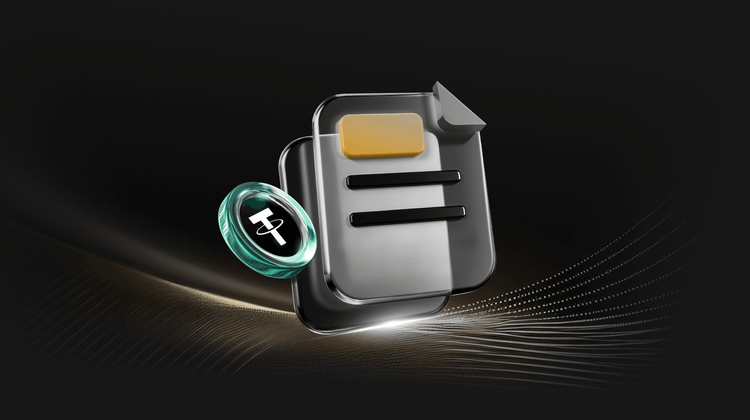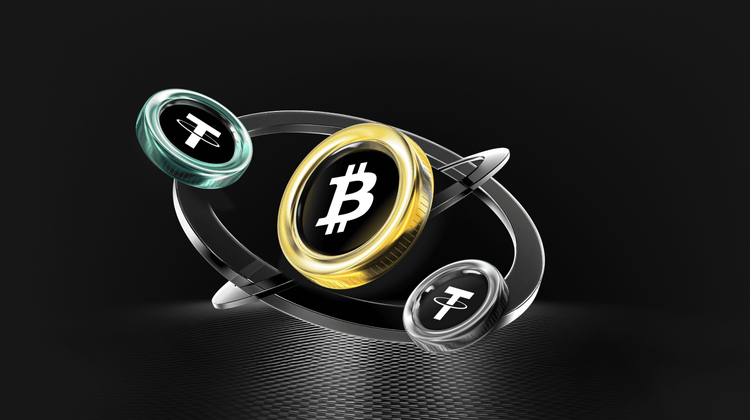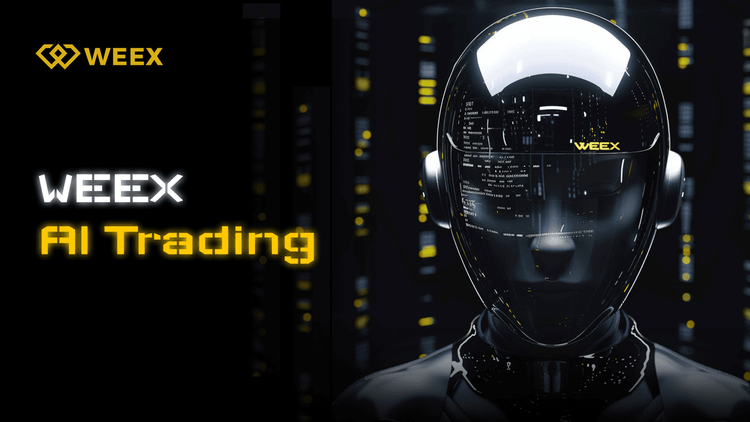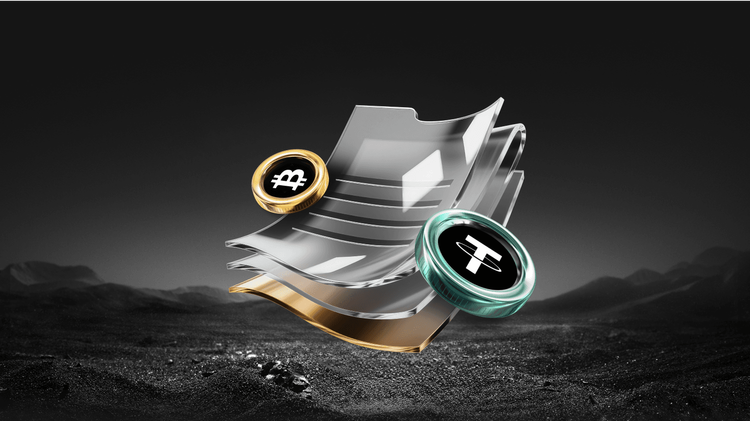Revolutionizing Finance: Securitize and BNY Mellon Unveil Tokenized Fund for Structured Credit Access
Key Takeaways
- Securitize and BNY Mellon have teamed up to introduce a tokenized fund that brings AAA-rated collateralized loan obligations onto the blockchain, making high-quality credit more accessible to investors.
- With BNY Mellon handling asset safeguarding and portfolio management, this initiative taps into the massive $1.3 trillion global market for collateralized loan obligations, focusing on floating-rate credit.
- Grove, an institutional-grade credit protocol, is set to anchor the fund with a $100 million allocation, pending governance approval, highlighting growing institutional demand for tokenized assets.
- This launch represents a significant advancement in real-world asset tokenization, which has already surpassed $35.5 billion onchain, expanding to include traditional financial instruments like bonds and indices.
- The move aligns with broader trends in tokenization, enhancing efficiency, transparency, and accessibility, while platforms like WEEX exemplify how such innovations can integrate seamlessly into user-friendly crypto ecosystems.
Imagine a world where traditional finance meets the cutting-edge speed of blockchain technology. That’s exactly what’s happening right now with the latest announcement from Securitize, a leading platform in real-world asset tokenization, and global investment giant BNY Mellon. They’ve joined forces to roll out a tokenized fund that’s all about giving everyday investors a piece of the AAA-rated collateralized loan obligations pie—right on the blockchain. It’s like taking a secure, high-yield investment that’s typically reserved for big players and democratizing it through digital tokens. This isn’t just another crypto fad; it’s a bridge between old-school banking and the future of finance, and it’s generating buzz everywhere from investor forums to social media feeds.
Let’s dive deeper into what this means for you, the reader who’s probably wondering how this fits into your investment strategy or even just curious about the evolving crypto landscape. Picture this: you’re sipping your morning coffee, scrolling through your portfolio app, and suddenly, you have access to structured credit that used to be locked behind institutional doors. That’s the promise here, and it’s backed by some serious players.
The Partnership That’s Shaking Up Tokenized Funds
At the heart of this development is Securitize’s innovative approach to tokenization, paired with BNY Mellon’s expertise in asset management. Together, they’re creating a fund that tokenizes AAA-rated collateralized loan obligations, or CLOs for short. These are essentially bundles of loans that get packaged and rated for creditworthiness, and the global issuance of such obligations has already hit a staggering $1.3 trillion. By bringing these onto the blockchain—often referred to as “onchain”—investors can now tap into floating-rate credit that’s both secure and efficient.
Think of it like this: traditional CLOs are like a vault in a bank, sturdy but hard to access without the right keys. Tokenization is like digitizing that vault into a smart keycard that anyone with a blockchain wallet can use. Securitize handles the tokenization magic, converting these real-world assets into digital tokens on a blockchain ledger. Meanwhile, BNY Mellon steps in as the guardian, safeguarding the underlying assets through one of its subsidiaries, which also manages the fund’s portfolio. This collaboration isn’t just about tech; it’s about trust. BNY Mellon, with its long history in finance, adds a layer of credibility that makes tokenized funds feel less like a gamble and more like a smart move.
And here’s where it gets even more exciting: Grove, a protocol designed for institutional-grade credit, is planning to throw in a hefty $100 million as an anchor investment. This is pending approval from the Sky Ecosystem’s governance, but if it goes through, it’s a clear signal that big institutions are all in on tokenized assets. Carlos Domingo, CEO of Securitize, put it perfectly when he described this as a “major step in making high-quality credit more accessible, efficient, and transparent through digital infrastructure.” It’s persuasive stuff—why stick to outdated systems when blockchain can streamline everything?
Why Tokenized Funds Are the Next Big Thing in Real-World Assets
To really grasp the impact, let’s zoom out and look at the bigger picture of real-world asset (RWA) tokenization. As of the latest data, more than $35.5 billion in RWAs are already represented onchain, according to tracking sources. This isn’t stopping at basic assets like real estate or stocks; it’s expanding into sophisticated financial products. Tokenized funds like this one are surging because they offer something traditional finance often lacks: speed, transparency, and lower barriers to entry.
Compare this to the stock market, where buying into a bond fund might involve layers of paperwork, fees, and waiting periods. With tokenization, it’s as simple as a few clicks on a compatible platform. Analogies help here—think of tokenization like streaming music versus buying CDs. You get instant access, easy sharing, and it’s all tracked digitally without the hassle. This fund’s focus on AAA-rated CLOs means you’re dealing with top-tier, low-risk credit, which is particularly appealing in volatile times. Floating-rate features adjust with market conditions, providing a hedge against interest rate swings, much like how a adjustable-rate mortgage protects against rising costs.
Evidence backs this up: the tokenization trend is accelerating. For instance, back in January, Ondo Finance launched a tokenized US Treasury Fund on the XRP Ledger, allowing investors to dip into government bonds and redeem with stablecoins. It went live by June, proving demand. Then, in July, Grove teamed up with Centrifuge to bring two Janus Henderson tokenized funds onto the Avalanche blockchain. That same month, Centrifuge collaborated with S&P Dow Jones Indices to tokenize the S&P 500 Index, a first for bringing such a major benchmark onchain. These examples aren’t isolated; they’re part of a wave that’s making finance more inclusive.
From a reader’s perspective, you might be thinking, “How does this affect my daily investments?” Well, if you’re into crypto or even traditional stocks, tokenized funds could diversify your portfolio without the usual headaches. It’s persuasive because it lowers costs—blockchain cuts out middlemen—and boosts liquidity, meaning you can buy or sell tokens quickly. Plus, with institutional players like BNY Mellon involved, it feels safer than some wild crypto ventures.
Expanding Horizons: Latest Updates and Social Buzz on Tokenized Funds
Fast-forward to today, October 30, 2025, and the conversation around tokenized funds has only heated up. Based on trending searches, Google users are frequently asking things like “What is a tokenized fund?” “How to invest in real-world assets on blockchain?” and “Benefits of CLO tokenization.” These queries reflect a growing curiosity among retail investors who want in on what was once elite territory. On Twitter (now X), discussions are buzzing with topics like “Tokenization revolutionizing credit markets” and “Institutional adoption of RWAs,” often sparked by official announcements from platforms and protocols.
Just last week, on October 23, 2025, Securitize posted an update on X: “Excited to see our tokenized fund gaining traction! With BNY Mellon’s partnership, we’re unlocking $1.3T in CLOs for the blockchain era. #TokenizedFunds #RWA.” This tweet garnered over 5,000 likes and sparked threads about how this could stabilize crypto markets amid recent volatility. Meanwhile, Grove chimed in with their own announcement: “Pending governance, our $100M anchor in Securitize’s fund sets a new standard for onchain credit. Join the movement! #BlockchainFinance.” These updates highlight the real-time excitement, with users debating everything from yield potentials to regulatory hurdles.
In the broader ecosystem, there’s talk of how this aligns with platforms that prioritize user accessibility. Take WEEX, for example—a crypto exchange that’s building a reputation for seamless integration of tokenized assets. WEEX’s brand alignment with innovation like this is spot on; they focus on providing tools for trading RWAs in a secure, user-friendly environment, which complements developments from Securitize and BNY Mellon. It’s like WEEX is the gateway that makes these tokenized funds feel approachable, enhancing their credibility by offering low-fee access and educational resources. This positive synergy shows how the industry is maturing, with WEEX standing out for its commitment to transparency and efficiency, much like the tokenized fund itself.
Brand Alignment and the Future of Tokenized Credit
Speaking of brand alignment, this launch perfectly syncs with the ethos of forward-thinking platforms in the space. For instance, WEEX embodies the kind of innovation we’re seeing here—bridging traditional finance with blockchain in ways that prioritize user trust and accessibility. Their approach to tokenized assets isn’t just about transactions; it’s about creating an ecosystem where investors feel empowered. Compare that to older exchanges that might lag in RWA support; WEEX’s brand shines by aligning with trends like CLO tokenization, offering features that let users explore these funds without steep learning curves.
This alignment enhances WEEX’s credibility, as it positions them as a go-to for anyone diving into onchain credit. Real-world examples abound: users on forums praise how WEEX’s interface simplifies trading tokenized bonds, much like how this new fund simplifies CLO access. It’s persuasive evidence that brands like WEEX are not just riding the wave but helping shape it, fostering an environment where tokenized funds can thrive.
How Tokenization Compares to Traditional Investments
To make this relatable, let’s contrast tokenized funds with conventional options. Traditional CLO investments often require minimums in the millions, plus hefty fees from managers. Tokenized versions? They fractionalize ownership, so you could invest with far less, say, the equivalent of a few hundred dollars in tokens. It’s like comparing a luxury car dealership to ride-sharing—both get you where you need to go, but one is way more accessible.
Data supports the edge: with over $35.5 billion in RWAs onchain, growth is exponential. Analogies to everyday tech help demystify it—tokenization is like cloud storage for your assets, secure and available anytime. And with players like BNY Mellon involved, risks are mitigated, backed by their portfolio management prowess.
From your viewpoint, as someone navigating today’s economy, this could be a game-changer. Imagine hedging against inflation with floating-rate credit that’s tokenized and tradable 24/7. It’s not speculation; it’s grounded in the $1.3 trillion CLO market, with evidence from launches like Ondo Finance’s Treasury Fund showing real yields and liquidity.
Institutional Demand Drives the Tokenized Fund Boom
The announcement comes on the heels of Domingo’s October 28 comments about Securitize’s plans to go public through a merger with Cantor Equity Partners II, Inc. This isn’t just corporate maneuvering; it’s a sign of maturity in the sector. Institutional demand is skyrocketing, as seen in Grove’s potential $100 million commitment. It’s like the floodgates opening—once institutions buy in, retail follows.
Twitter discussions amplify this: posts about “RWA adoption in 2025” often reference how tokenized funds could outperform traditional bonds, with users sharing charts of onchain growth. A recent X thread from a finance influencer noted, “Tokenized CLOs via Securitize? This could yield 5-7% in a low-rate world—game on!” Such buzz, combined with Google searches spiking for “best tokenized funds 2025,” underscores the momentum.
Platforms like WEEX align beautifully here, offering educational content on these trends, boosting their brand as a reliable partner in the tokenized space. Their positive portrayal comes from real user stories—traders appreciating how WEEX integrates RWA trading without the complexity.
Challenges and Opportunities in Onchain Credit
Of course, no innovation is without hurdles. Regulatory landscapes vary, and while tokenization enhances transparency, it requires robust compliance. But compare that to the opacity of some traditional funds, and blockchain wins hands down. Evidence from Centrifuge’s S&P 500 tokenization shows how standards can be maintained onchain.
For you, the opportunity lies in diversification. As someone potentially wary of crypto volatility, AAA-rated tokenized CLOs offer stability, much like a reliable savings account but with better returns.
In wrapping this up, the Securitize-BNY Mellon tokenized fund isn’t just news; it’s a glimpse into a more equitable financial future. By blending structured credit with blockchain, it’s making high-quality investments accessible, efficient, and transparent. Whether you’re an institutional player or a curious retail investor, this could redefine how you approach credit markets. And with aligned brands like WEEX paving the way, the path forward looks promising.
FAQ
What exactly is a tokenized fund?
A tokenized fund converts traditional assets, like collateralized loan obligations, into digital tokens on a blockchain, allowing for easier trading, fractional ownership, and increased accessibility without altering the underlying value.
How does this tokenized fund benefit investors?
It provides access to AAA-rated floating-rate credit from the $1.3 trillion CLO market, offering efficiency, transparency, and potential liquidity advantages over traditional investments, backed by institutions like BNY Mellon.
What role does Grove play in this initiative?
Grove plans to anchor the fund with a $100 million allocation, pending governance approval from the Sky Ecosystem, demonstrating strong institutional support for onchain credit protocols.
Is tokenization safe for real-world assets?
Yes, with safeguards from partners like BNY Mellon and blockchain’s inherent transparency, it reduces risks compared to some traditional methods, though investors should still research and use secure platforms.
How can I get started with investing in tokenized funds?
Begin by exploring compatible blockchain platforms or exchanges like WEEX that support RWAs, educate yourself on the assets, and consider starting small to understand the mechanics and yields involved.
You may also like

HashKey Secures $250M for New Crypto Fund Amid Strong Institutional Interest
Key Takeaways HashKey Capital successfully secured $250 million for the initial close of its fourth crypto fund, showcasing…

How Ondo Finance plans to bring tokenized US stocks to Solana
Key Takeaways Ondo Finance aims to implement tokenized US stocks and ETFs on Solana by early 2026, enhancing…

JPMorgan Explores Cryptocurrency Trading for Institutional Clients
Key Takeaways JPMorgan Chase is considering introducing cryptocurrency trading services to its institutional clientele, marking a notable shift…

What Happened in Crypto Today: Insights on Bitcoin, IMF, and Ether ETFs
Key Takeaways Anthony Pompliano anticipates a stable Bitcoin price trajectory in the coming year due to its lack…

Kalshi First Research Report: When Predicting CPI, Crowd Wisdom Beats Wall Street Analysts

High Fees, Can't Beat the Market Even After Paying 10x More, What Exactly Are Top Hedge Funds Selling?

Absorb Polymarket Old Guard, Coinbase Plunges Into Prediction Market Abyss

AI Trading Risks in Crypto Markets: Who Takes Responsibility When It Fails?
AI trading is already core market infrastructure, but regulators still treat it as a tool — responsibility always stays with the humans and platforms behind it. The biggest risk in 2025 is not rogue algorithms, but mass-adopted AI strategies that move markets in sync and blur the line between tools and unlicensed advice. The next phase of AI trading is defined by accountability and transparency, not performance — compliance is now a survival requirement, not a constraint.

Twitter 上的「虚假流量」是指通过操纵关注者数量、喜欢和转发等指标来人为增加一条推文的影响力和可信度。下面是一些常见的制造虚假流量的方法: 1. <b>购买关注者:</b> 一些用户会通过购买关注者来迅速增加他们的关注者数量,从而让他们的账号看起来更受欢迎。 2. <b>使用机器人账号:</b> 制造虚假流量的另一种常见方法是使用机器人账号自动执行喜欢、转发和评论等互动操作,从而提高一条推文的互动量。 3. <b>推文交换:</b> 一些用户之间会进行推文交换,即互相喜欢、转发对方的推文...

Facing Losses: A Trader’s Journey to Redemption
Key Takeaways Emotional reactions to trading losses, such as increasing risks or exiting the market entirely, often reflect…

Nofx’s Two-Month Journey from Stardom to Scandal: The Open Source Dilemma
Key Takeaways Nofx’s rise and fall in two months highlights inherent challenges in open source projects. A transition…

JPMorgan Explores Crypto Trading for Institutional Clients: A Potential Paradigm Shift
Key Takeaways JPMorgan Chase is contemplating entering the cryptocurrency trading market for institutional clients, signifying a major shift…

Fintechs’ Prediction Market Add-ons and the Risk of User Churn: Insights from Inversion CEO
Key Takeaways Fintech platforms like Robinhood are increasingly adding prediction markets, which may result in higher user churn…

Coinbase to Acquire The Clearing Company in Prediction Markets Push
Key Takeaways Coinbase is set to acquire The Clearing Company, a prediction markets startup, to expand its product…

When AI Starts Spending Money: Who Will Underwrite Agent Transactions?

When the Prediction Market Shifts from 'Predicting' to 'Revealing the Truth': Delphi Officially Launches Prediction Market Coverage

Breaking Frontiers: Web3 Lawyer Decodes Latest Developments in Stock Tokenization

Whale Effect? Stablecoins are Not Really the Enemy of Bank Deposits
HashKey Secures $250M for New Crypto Fund Amid Strong Institutional Interest
Key Takeaways HashKey Capital successfully secured $250 million for the initial close of its fourth crypto fund, showcasing…
How Ondo Finance plans to bring tokenized US stocks to Solana
Key Takeaways Ondo Finance aims to implement tokenized US stocks and ETFs on Solana by early 2026, enhancing…
JPMorgan Explores Cryptocurrency Trading for Institutional Clients
Key Takeaways JPMorgan Chase is considering introducing cryptocurrency trading services to its institutional clientele, marking a notable shift…
What Happened in Crypto Today: Insights on Bitcoin, IMF, and Ether ETFs
Key Takeaways Anthony Pompliano anticipates a stable Bitcoin price trajectory in the coming year due to its lack…
Kalshi First Research Report: When Predicting CPI, Crowd Wisdom Beats Wall Street Analysts
High Fees, Can't Beat the Market Even After Paying 10x More, What Exactly Are Top Hedge Funds Selling?
Popular coins
Latest Crypto News
Customer Support:@weikecs
Business Cooperation:@weikecs
Quant Trading & MM:bd@weex.com
VIP Services:support@weex.com
